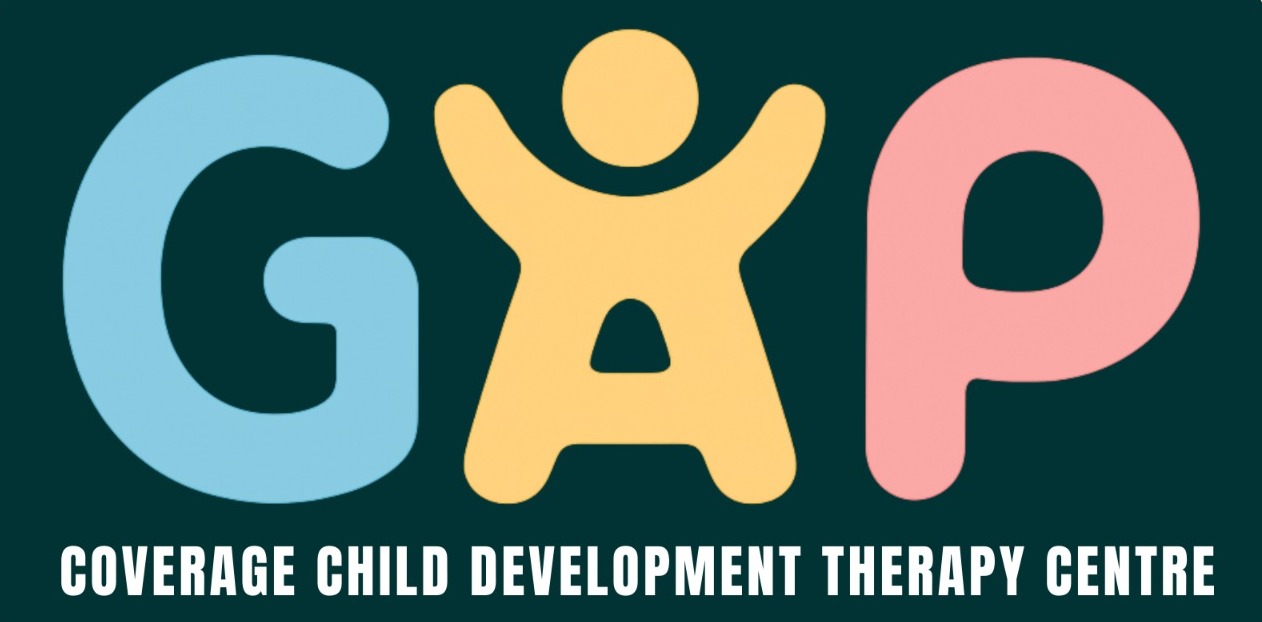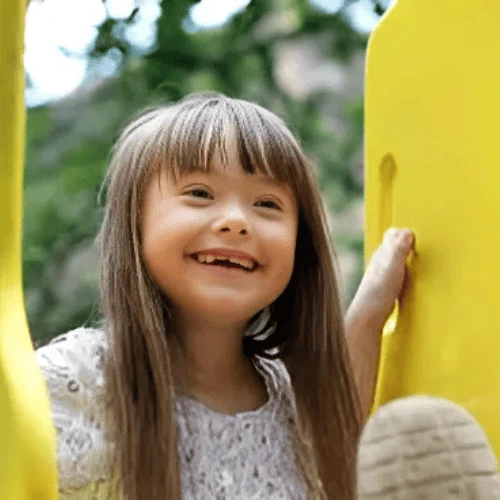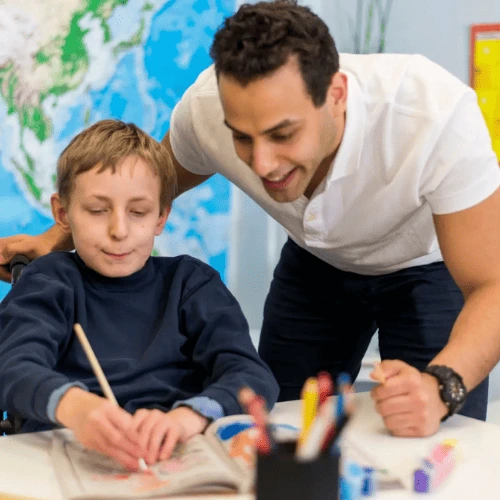GAP Coverage child development therapy centre
We are dedicated to providing comprehensive and compassionate care for children with developmental challenges. Our mission is to bridge the gaps in early intervention and specialized therapies, ensuring every child receives the support they need to thrive.
Therapies We Provide
We offer a comprehensive range of evidence-based therapies designed to support individuals in achieving their full potential. Our team of dedicated professionals is committed to providing personalized care in a nurturing and effective environment.
Autism
Autism, or Autism Spectrum Disorder (ASD), is not an illness or a disease. It is a lifelong neurodevelopmental condition, which means it affects how the brain develops and processes information. People are born autistic and the characteristics appear in early childhood.
The most important thing to understand is that it is a spectrum. This means every autistic person is unique, with their own set of strengths, challenges, and experiences. Imagine a kaleidoscope—infinite variations of patterns and colors. You cannot define one autistic person by another.
Core Characteristics
While experiences vary widely, autism is generally characterized by differences in two main areas:
1. Social Communication and Interaction:
-
Differences in understanding nonverbal cues like tone of voice, body language, and facial expressions.
-
Challenges in developing, maintaining, and understanding relationships; may approach social interactions in unique ways.
-
May have a unique style of conversation (e.g., being very literal, having a specialized vocabulary, or talking extensively about specific interests).
2. Restricted, Repetitive Patterns of Behavior, Interests, or Activities (RRBs):
-
Repetitive movements or speech patterns (e.g., hand-flapping, rocking, repeating phrases—known as “stimming” or self-stimulatory behavior, which can help with regulation).
-
A strong need for routine, consistency, and predictability; distress can be caused by changes.
-
Highly focused and intense interests in specific topics.
-
Differences in sensory processing (e.g., being over- or under-sensitive to sounds, lights, textures, tastes, or smells).
Vioce Disorder
Voice therapy is a specialized form of treatment designed to improve and rehabilitate the human voice. Led by a licensed speech-language pathologist (SLP) with expertise in voice disorders, it uses a combination of techniques, exercises, and education to help individuals achieve a healthier, stronger, and more reliable voice.
What is the Goal of Voice Therapy?
The primary goal is to identify and correct improper vocal habits and to teach healthy, sustainable voice production. It aims to:
-
Reduce vocal strain and hoarseness.
-
Increase vocal endurance for speaking or singing for long periods.
-
Alleviate discomfort or pain associated with speaking.
-
Improve vocal quality (e.g., reduce breathiness, harshness, or roughness).
-
Maximize vocal potential for professional voice users (singers, teachers, call center agents, coaches).
-
Rehabilitate the voice following surgery or a medical condition.
How Does It Work?
Voice therapy is highly personalized. It typically begins with a comprehensive assessment to diagnose the specific vocal issue. The therapist will then create a customized treatment plan, which often includes:
-
Vocal Hygiene Education: Learning about behaviors that support or harm the voice (e.g., hydration, avoiding yelling, managing acid reflux).
-
Direct Vocal Exercises: Techniques to improve the strength, coordination, and efficiency of the vocal cords. These can include:
-
Breathing exercises to support speech with adequate airflow.
-
Resonance techniques to create a clearer, more projected sound with less effort.
-
Pitch and volume modulation exercises.
-
ADHD
ADHD, which stands for Attention-Deficit/Hyperactivity Disorder, is a neurodevelopmental disorder. This means it’s a brain-based condition that begins in childhood and often lasts into adulthood.
It’s important to understand that ADHD is not a result of laziness, a lack of intelligence, or poor discipline. It’s a real medical condition with biological underpinnings that affect key brain functions.
The core challenges of ADHD revolve around what experts call executive functions. These are the mental skills that help us manage ourselves and our resources to achieve a goal. They include:
-
Working Memory: Holding information in mind for short periods.
-
Cognitive Flexibility: Switching focus or adapting to new rules.
-
Inhibitory Control: Controlling impulses, emotions, and actions.
People with ADHD have significant and persistent difficulties in these areas, which manifest in three primary types of symptoms:
1. Inattention (Difficulty Paying Attention)
-
Makes careless mistakes, lacks attention to detail.
-
Trouble sustaining focus in tasks, conversations, or lengthy readings.
-
Seems not to listen when spoken to directly (seems to be elsewhere).
-
Fails to follow through on instructions or finish tasks (easily sidetracked).
-
Difficulty organizing tasks and activities (poor time management, messy workspaces).
-
Avoids or dislikes tasks requiring sustained mental effort.
-
Often loses things necessary for tasks (keys, phone, tools, paperwork).
-
Easily distracted by unrelated thoughts or stimuli.
Learning Disability
Learning Disability Support at GAP Coverage Child Development Therapy Centre
learning disability is a neurological condition that affects the brain’s ability to receive, process, store, and respond to information. It is not a problem with intelligence or motivation. In fact, people with learning disabilities often have average or above-average intelligence.
Think of it as a unique wiring of the brain that makes standard ways of learning challenging. It creates a “gap” between a person’s potential and their academic achievement.
-
Dyslexia: A language-based disability that affects reading. This can include difficulties with accurate word recognition, decoding words, reading fluency, and spelling.
-
Dyscalculia: A disability that affects a person’s ability to understand numbers and learn math facts. They may struggle with memorizing arithmetic, understanding concepts like time and measurement, and mathematical reasoning.
-
Dysgraphia: A writing disability that affects handwriting, spelling, and the ability to put thoughts on paper. Handwriting may be illegible, and the act of writing can be physically exhausting.
-
Auditory & Visual Processing Disorders: Difficulties in understanding language despite normal hearing and vision. The brain doesn’t correctly interpret what the ear hears or what the eye sees.
-
Non-Verbal Learning Disabilities: Challenges with interpreting nonverbal cues like facial expressions, body language, and social cues. There can also be poor coordination and motor skills.
















